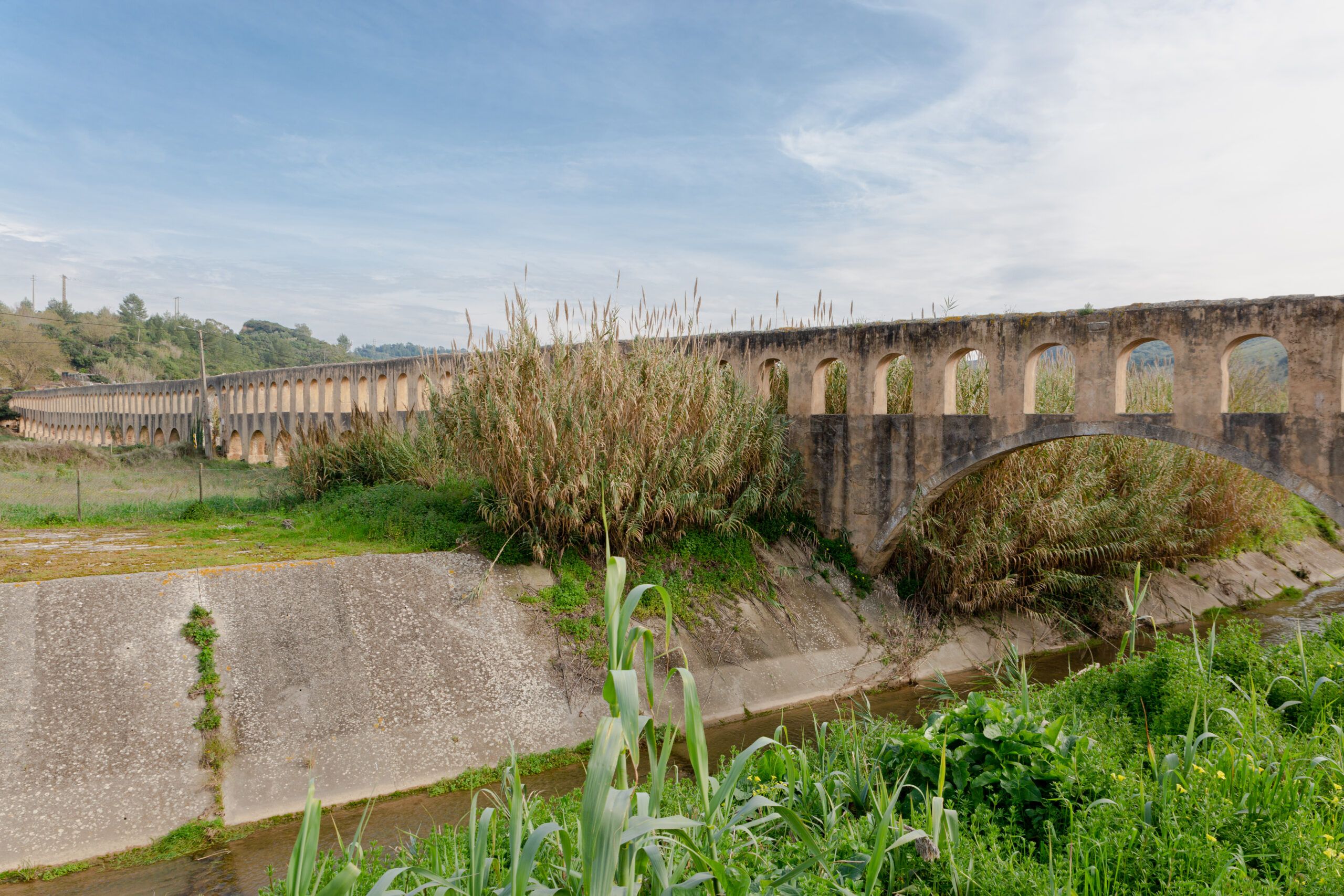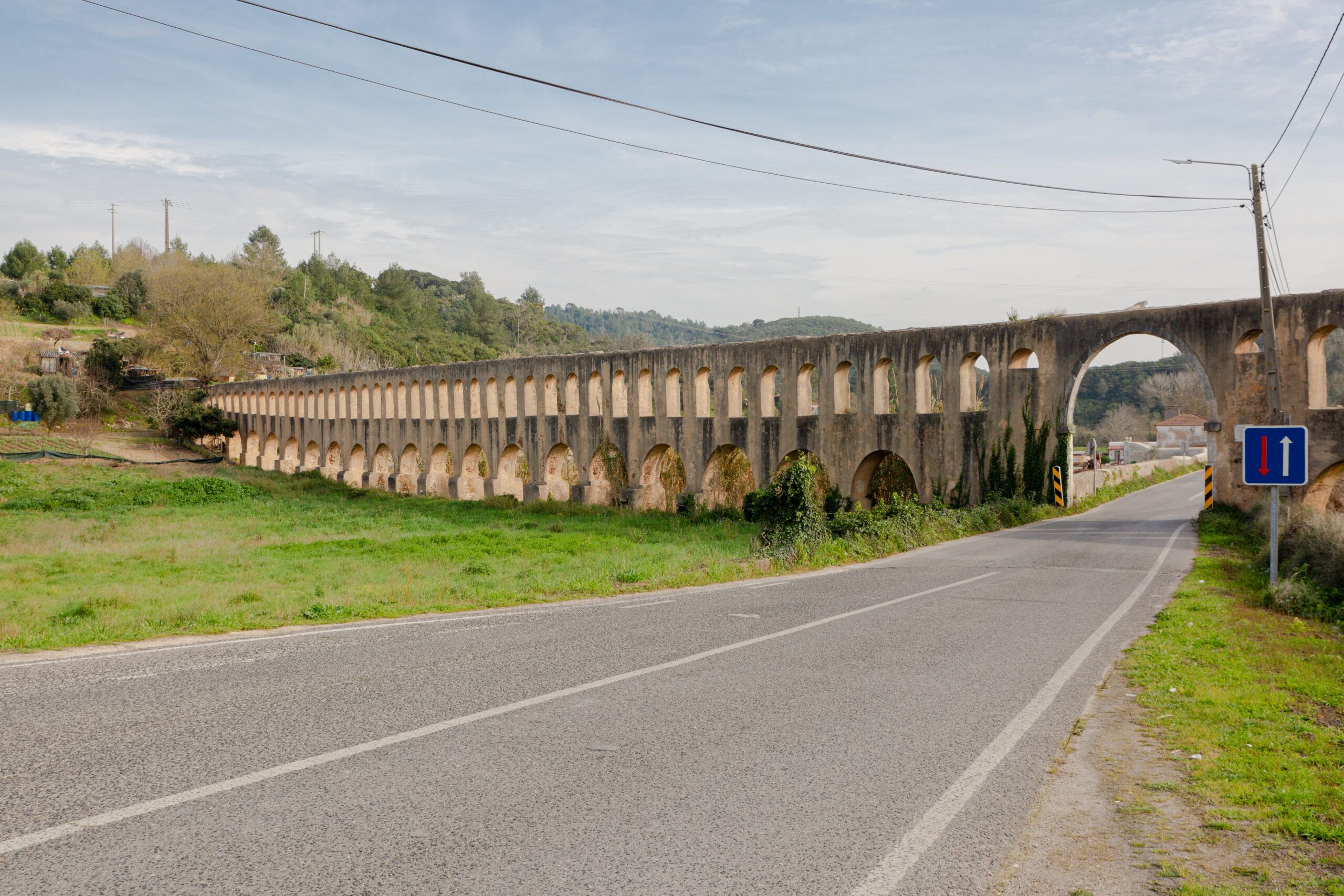Aqueduto da Fonte dos Canos
Categories/tags: Aqueducts for water management.
Historical Context: The Aqueduto da Fonte dos Canos, a remarkable feat of hydraulic engineering, has been an integral part of Torres Vedras’ history since its construction. While the exact date of its inception remains uncertain, historical records mention it as early as 1561. Designed to supply water to the city, particularly to the Chafariz dos Canos, this aqueduct underwent restoration works in the 18th century and underwent further renovations in 1990. Classified as a National Monument since 1910, its significance extends beyond mere infrastructure; it symbolizes the vision and craftsmanship of past civilizations in harnessing natural resources for societal benefit.
Form – main architectural features: Stretching over two kilometers, the Aqueduto da Fonte dos Canos features a dual-tiered structure with rows of rounded arches. These arches, whether traversing above ground or underground, demonstrate meticulous craftsmanship and strategic design. Notably, the aqueduct crosses the Sizandro River and a road to Runa with a monumental single arch, showcasing both functionality and aesthetic grandeur. Originally built to supply water to the Chafariz dos Canos, situated in Torres Vedras’ historic center, both structures share architectural similarities, emphasizing continuity in design and purpose.
Function: The primary function of the Aqueduto da Fonte dos Canos was to provide a reliable water supply to Torres Vedras, ensuring the city’s sustenance and development. Spanning a considerable distance, it facilitated the transport of water from distant sources to urban centers, supporting essential activities such as agriculture, industry, and sanitation. The aqueduct’s strategic location and robust construction ensured the efficient distribution of water, contributing to the city’s prosperity and well-being.
Lessons for sustainability: The Aqueduto da Fonte dos Canos serves as a historical lesson in sustainable water management. Despite centuries of use, its enduring presence highlights the importance of harnessing natural resources responsibly and maintaining vital infrastructure for future generations. Preservation efforts undertaken in recent decades underscore the value of cultural heritage in promoting sustainable practices and fostering community resilience in the face of environmental challenges.
Cultural heritage and tourism: As a designated National Monument, the Aqueduto da Fonte dos Canos makes it a compelling destination for cultural exploration. Visitors can marvel at the aqueduct’s imposing structure, learn about its historical context, and appreciate its enduring legacy through guided tours and educational exhibits. Additionally, the aqueduct’s proximity to other historical sites and landmarks enhances its appeal as a cultural heritage destination, contributing to local tourism and economic growth.
Location: Torres Vedras – Portugal
Aqueduto da Fonte dos Canos – Portugal

Sources
Aqueduto da Fonte dos Canos. (2010, March 25th). In Wikipedia. https://pt.wikipedia.org/wiki/Aqueduto_da_Fonte_dos_Canos
Aqueduto de Torres Vedras / Aqueduto da Fonte dos Canos (2011). Sistema de Informação para o Património Arquitetónico. Retrieved March 10th, 2024, from http://www.monumentos.gov.pt/Site/APP_PagesUser/SIPA.aspx?id=3185
Tvantiga (2019). O Aqueduto da fonte dos Canos. Retrieved March 10th, 2024, from https://torresvedrasantiga.wordpress.com/2019/07/12/o-aqueduto-da-fonte-dos-canos/




